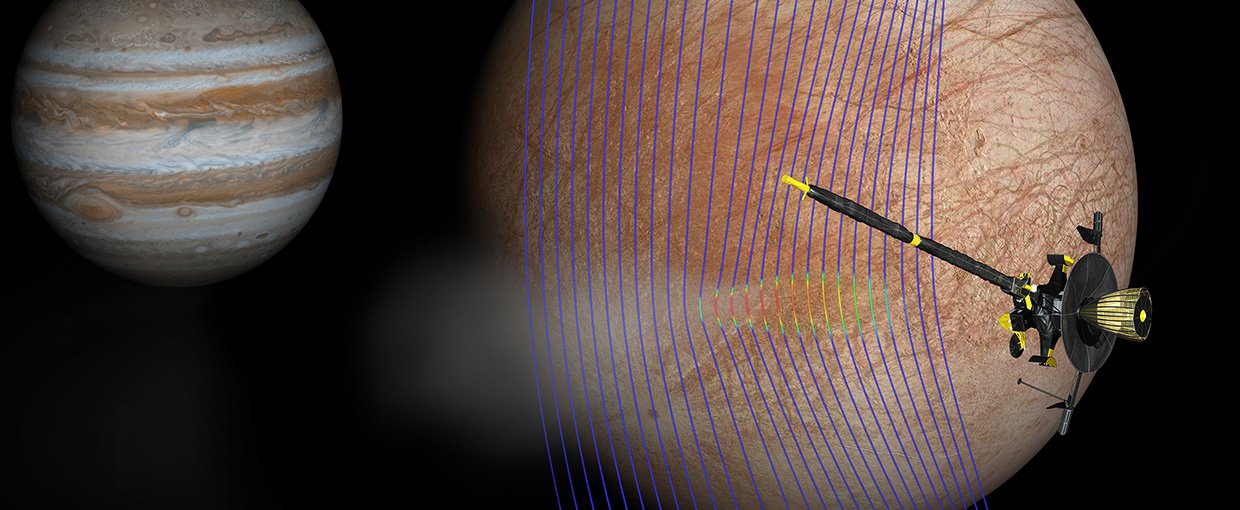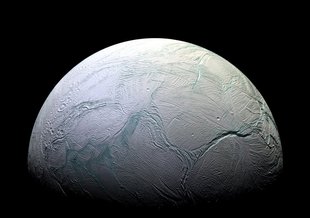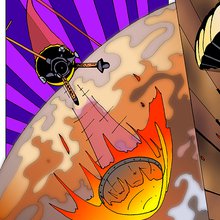- Launch Date October 18, 1989
- Arrival Date December 07, 1995
- End DateSeptember 21, 2003
- Mission TypeOrbiter
- TargetJupiter System
Mission Overview
The primary aim of NASA’s Galileo mission was to study the giant planet Jupiter and its many moons. The mission also made many valuable discoveries on route to Jupiter. Galileo was the first spacecraft to visit an asteroid, and visited two during its journey – Gaspra and Ida. Galileo also captured infrared images of clouds at Venus. Galileo also carried a small probe that it deployed and sent deep into the atmosphere of Jupiter, taking readings for almost an hour before the probe was crushed by overwhelming pressure.
After discoveries including evidence for the existence of a saltwater ocean beneath the Jovian moon Europa’s icy surface, extensive volcanic processes on the moon Io and a magnetic field generated by the moon Ganymede, Galileo plunged into Jupiter’s atmosphere on September 21, 2003 to prevent an unwanted impact with Europa.
Relevance to Astrobiology
NASA’s Galileo mission returned data that continues to shape astrobiology science. It was Galileo’s observations in the Jupiter system that led to the discovery that moons of the giant planet – particularly Europa – had evidence of hidden oceans beneath their surfaces. Because of Galileo, Europa is one of the most important astrobiology targets in the Solar System. These findings also expanded the search for habitable environments outside of the traditional ‘habitable zone’ of a system, the distance from a star at which liquid water can persist on the surface of a planet.
NASA Astrobiology Involvement
Researchers supported by elements of the Astrobiology Program continue to use data gathered by the Galileo mission to better understand the potential habitability of jovian moons, such as Europa. The Astrobiology program devotes resources toward determining life’s potential on moons like Europa. Studies supported by the program include Earth-based research in laboratories and in the field that are used to interpret data from Galileo. The Astrobiology Program also supports the development of instruments that will be used on future missions to the Jupiter system. Data from Galileo’s journey to Jupiter, and within the Jupiter system, has also greatly informed our understanding of how and where potentially habitable worlds could form beyond our own solar system.





















